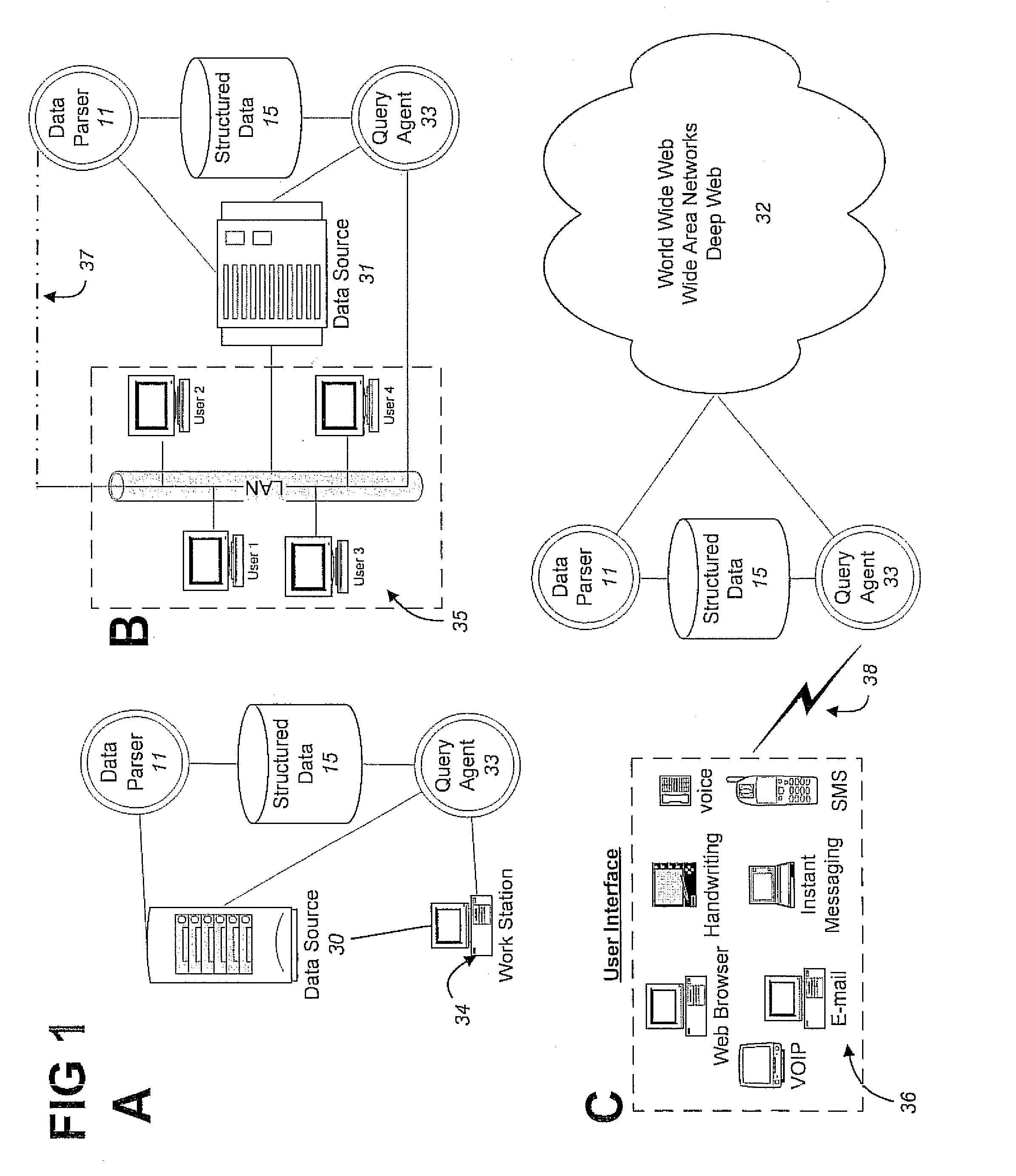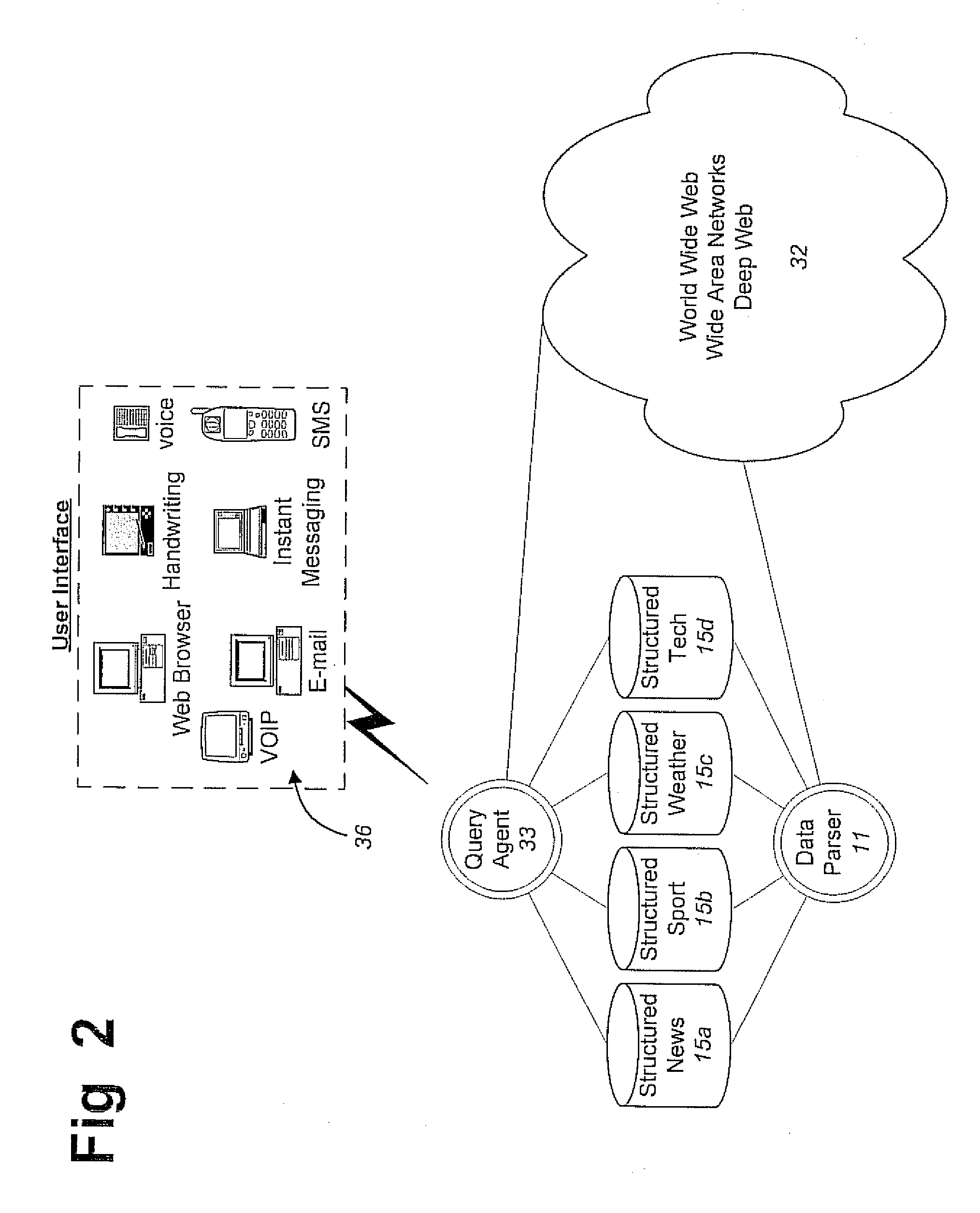Novel systems and methods for performing contextual information retrieval
a contextual information and information retrieval technology, applied in the field of systems and methods for encoding and retrieving information, can solve the problems of inability to discriminate between documents that are actually relevant and others, difficult for most people to use effectively to construct boolean search queries, and generally contain too many unrelated documents to be useful, etc., to achieve efficient storage of information in an encoded database
- Summary
- Abstract
- Description
- Claims
- Application Information
AI Technical Summary
Benefits of technology
Problems solved by technology
Method used
Image
Examples
Embodiment Construction
I. Introduction
[0046] The present invention provides novel systems, devices, and methods for encoding and storing information in a manner that enhances retrieval of relevant information, especially from large and / or dispersed data sources. This is accomplished by encoding sentences contained within, or associated with, files in the data source in a manner that identifies structural characteristics of each word in the sentence, such as the relationship between words in the sentence. These encoded sentences are stored in a structured database and the information they relate to retrieved by comparing the stored encoded sentences with a statement that is generated by encoding a query in the same manner as the encoded sentences stored in the structured database. A unique aspect of the present invention is that every word of the query is evaluated in performing a search. Another unique aspect of the invention is that structural relationships found within a sentence and encoded by the pres...
PUM
 Login to View More
Login to View More Abstract
Description
Claims
Application Information
 Login to View More
Login to View More - R&D
- Intellectual Property
- Life Sciences
- Materials
- Tech Scout
- Unparalleled Data Quality
- Higher Quality Content
- 60% Fewer Hallucinations
Browse by: Latest US Patents, China's latest patents, Technical Efficacy Thesaurus, Application Domain, Technology Topic, Popular Technical Reports.
© 2025 PatSnap. All rights reserved.Legal|Privacy policy|Modern Slavery Act Transparency Statement|Sitemap|About US| Contact US: help@patsnap.com



